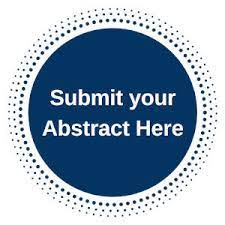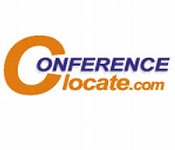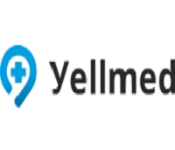About Conference
Conference Series llc Ltd. extends its welcome to Down Syndrome, Autism & Cerebral Palsy during June 09-10, 2022 at Webinar with a theme “Exploring the Challenges and Excellence in Down Syndrome and Autism”. Conference Series llc Ltd through its Open Access Initiative is committed to make genuine and reliable contributions to the scientific community.
Down Syndrome 2022 will focus on educational research directed toward its impact on clinical outcomes, through oral and poster presentations, educational workshop sessions, and influential plenary presentations. Attendees will be provided with the tools to enhance research geneticist programs to make education more effective in Genetic Disorders.
Conference will focus on the following topics during presentations of the two days event, which reflect current education research, developments and innovations internationally and as evidenced in both Genetic Disorders and Evidence Based Practice.
-
Teaching, Assessment and Learning in University and Clinical Practice
-
Technology, Simulation and Education
-
Continuing Professional Development
-
Continuing Education
-
Patient Safety
-
Innovation, Academic Leadership and Evaluation Research
-
Midwifery Education
The goal of Down Syndrome 2022 is to generate new ideas for treatment that will be beneficial across the spectrum of various neurological disorders. It is a great platform for professors, students, scientists, and researchers to collaborate on topics affecting genetic disorders. Attendees have an opportunity to learn more about genetic disorders research from a variety of oral and poster presentations and to collaborate with researchers from all over the world.
Target audience: Neurologists, Psychiatrists, Psychologists, Neurosurgeon, Head of the department, Director, Delegates, Clinical, Community members, Professors, Researchers, Students, Scientists, Nurses.
-
Neurologists and Directors
-
Physicians
-
Neuroscientists
-
Specialists
-
Researchers
-
Professors
-
Paediatrician
-
Neurosurgeons
-
Psychiatrist
-
Nutritional Scientists
-
Lecturers and Students from Academia in the study of Genetic disease
-
Students from Academia in the research of Genetic
-
Therapists
-
Research Geneticist
Sessions and Tracks
Track 1- Down syndrome
A genetic disorder where an abnormal cell division takes place and results in full or partial copy of chromosome 21 also known as trisomy 21 which causes an underdeveloped mental and physical features.
Track 2- Down syndrome signs and symptoms
Person with Down syndrome have physical as well as intellectual disabilities the also have poor immune system and their physical and mental development is slow as compared to the normal people, They have a huge risk of other health problems such as epilepsy, thyroid diseases, congenital heart disease, leukemia, tumor and mission blood cancer.
Track 3- Down syndrome and Epilepsy
It is a neurological disorder, in which nerve cell activity in the brain is disturbed, causing seizures. Epilepsy may occur as a result of a genetic disorder or an acquired by brain injury.
Track 4- Congenital Heart Disease in Down syndrome
Congenital heart disease among Down syndrome is around 40% and above 80% of people have ventricular sepal defect, atria ventricular sepal disease as well as mitral valve problem. Congenital heart disease (CHD) is frequently described in patients with Down syndrome (DS) and is the main cause of death in this population during the first two years of life. The spectrum of CHD patterns in DS varies widely worldwide; this variation could be due to socio demographic, genetic and geographic factors.
Track 5- Cancer in Down syndrome
People with Down syndrome have a risk of developing cancer from germ cells which can be blood or non-blood related. The risk of testicular cancer and blood cancer is more which also includes acute lymphoblastic leukemia (ALL) and acute mega karyoblastic leukemia (AMKL).
people with Down syndrome are highly protected from most solid tumor cancers, such as breast, uterine, and prostate cancers. However, people with Down syndrome are much more likely to develop certain leukemia, one of the key blood cancers found predominantly in children.
Track 6- Endocrinology in Down syndrome
20-50% of people with Down syndrome suffer with thyroid gland problem; congenital hypothyroidism is the most common form of low thyroid within the individual resulting in Type 1 diabetes mellitus, autoimmune hypothyroidism and Grave’s disease.Trisomy 21, have a higher likelihood of developing endocrine disorders than the general population. Hypothyroidism is the most common endocrine disorder in Down syndrome. About 10 percent of children with Down syndrome are diagnosed with congenital or acquired hypothyroidism.
Track 7- Fertility
Females with Down syndrome are fertile and do ovulate but also they get earlier menopause, about 35-50% of Down syndrome mothers gave birth to children have trisomy21 and other disabilities. Whereas males with Down syndrome have poor fertility as the suffer problem with sperm production and development and generally do not father children.
Track 8- Chromosomal Translocation and Trisomy 21
Down syndrome is caused by having three copies of genes on chromosome 21 also known as mosaic Down syndrome which can also give rise to Robertson Ian translocation, is chromosome or ring chromosome, these contain an additional genomic material from chromosome 21.
Track 9- Epigenetics and its mechanism
The study of heritable phenotypic changes that involve modification in the DNA sequence is called epigenetics such as DNA methylation and histone modification.
Track 10- Screening and Diagnosis
Down syndrome can be screened by amniocentesis or chronic villus sampling, blood testing, ultrasound (measures nuchal translucency), Quad screening (measures the maternal serum alpha-fetoprotein, unconjugated estriol, HCG and inhibit-A) Cell-free fetal DNA (blood sample of the fetus is collected by venipuncture and DNA analysis is done)
Track 11- Down syndrome management and Prognosis
Down syndrome management can be done by health screening in a systematic way and cognitive development by hearing aids, Speech therapy, sign language, augmented and alternative communication methods.
Down syndrome also depends upon the medical problem faced and complications, earlier children born with Down syndrome had a life span of 9 years but now due to the advance medical technologies and quality of life have increased their life span up to 55 years and many lived even longer.
Track 12- Down syndrome Prevention
Down syndrome can be prevented by consulting a genetic counselor before becoming pregnant and discussing about the risk factor but ultimately the condition cannot be prevented.
Track 13- Autism or Autism spectrum disorder
Autism is caused due to both the combination of genetics and environment, Autism is highly variable neurodevelopmental disorder whose symptoms first appears during infancy, this is distinguished by a trade of symptoms like trouble with social interaction, impaired communication, restricted interests, repetitive behavior.
Track 14- Autism and its causes
Autism has a strong genetic basis it is explained more by mutation, Exposure to air pollution during pregnancy, especially heavy metals and particulates, may increase the risk of autism. Maternal nutrition inflammation during preconception and pregnancy influences fetal neurodevelopment.
Track 15- Screening and Diagnosis of Autism
Since there is no medical test like a blood test, etc. to diagnose the disorders. Doctors look at the child's behavior and development to make a diagnosis.
Track 16- Autism Management and Prevention.
Autism management can be done by health screening in a systematic way and cognitive development by hearing aids, Speech therapy, special education, augmented and alternative communication methods and services should be carried out by behavior analyst, speech pathologist and licensed psychologist.
Track 17- Cerebral palsy and its cause
It’s a congenital disorder of movement, muscle tone or posture, cerebral palsy affects body movement and muscle coordination, reflex, balance and it is caused due to brain injury or brain malformation that occurs while the brain is at its developing stage i.e., before, during, or after birth.
Track 18- Cerebral palsy diagnosis and management
Cerebral palsy is diagnosed by checking family history and physical examination, early diagnosis and intervention works wonders in case of managing cerebral palsy as it is a developmental disability. There are many preventive interventions that have been investigated. The method Electronic fetal monitoring helps to prevent cerebral palsy.
Track 19 : Types of Down Syndrome
The problems can be experienced by any child, but are more common in those with DS. However, many children with DS do not experience most of these difficulties. Most pre-school children are prone to coughs, colds and ear infections. Children with DS are especially so, because of their relatively narrow ear and nasal passages. A healthy and fulfilling lifestyle can often be achieved through appropriate care, but DS cannot be cured. Various therapies make claims to a cure or at least dramatic improvement
Related Societies: Down Syndrome Society Langdon Down Centre; European Down Syndrome Association Belgium; AUTISM BC Canada; The Autism Society of India is registered under the Karnataka Societies; The Autism Society of Northern Virginia; The Autism Society of North Carolina; Neurological Foundation Council New Zealand; Neurological Society of India Uttar Pradesh; The American Neurological Association U.S.A
Track 20 : Molecular Genetics of Down syndrome
The genetic material, known as genes, carries the codes responsible for all our inherited characteristics. Genes are grouped along rod-like structures called chromosomes. Normally, the nucleus of each cell contains 23 pairs of chromosomes, half of which are inherited from each parent. In individuals with Down syndrome, however, the cells usually contain 47, not 46, chromosomes; the extra chromosome is the 21st. This excess genetic material, in the form of additional genes along chromosome 21, results in Down syndrome. The extra 21st chromosome is detected by using a procedure called a karyotype
Related Societies: Down Syndrome Society Langdon Down Centre; European Down Syndrome Association Belgium; AUTISM BC Canada; The Autism Society of India is registered under the Karnataka Societies; The Autism Society of Northern Virginia; The Autism Society of North Carolina; Neurological Foundation Council New Zealand; Neurological Society of India Uttar Pradesh; The American Neurological Association U.S.A
Track 21 :Autism Spectrum Disorder (ASD)
Children with autism often have difficulty letting others know what they want or need until they are taught how to communicate through speech, gestures or other means. Many children with autism need and demand absolute consistency in their environment. Young children with autism tend to be delayed in babbling, speaking and learning to use gestures. Some infants who later develop autism coo and babble during the first few months of life before losing these communicative behaviors. Others experience significant language delays and don’t begin to speak until much later. With therapy, however, most people with autism do learn to use spoken language and all can learn to communicate.
Related Societies: Down Syndrome Society Langdon Down Centre; European Down Syndrome Association Belgium; AUTISM BC Canada; The Autism Society of India is registered under the Karnataka Societies; The Autism Society of Northern Virginia; The Autism Society of North Carolina; Neurological Foundation Council New Zealand; Neurological Society of India Uttar Pradesh; The American Neurological Association U.S.A
Track 22 :: Cerebral Palsy Therapy
Therapy is often incorporated in an early intervention program which addresses not only the movement problems but aims to optimize the child’s progress in all areas of development the approach to the assessment and management of movement dysfunction in children with neurological dysfunction. The ultimate goal of treatment and management is to maximize the child’s functional ability. the therapy for children with hemiplegic cerebral palsy that aims to increase the child’s use of their hemiplegic arm and hand. This therapy approach has developed from studies of the effects of constraining the non-affected arm and hand of adults following stroke to 'force' the use of their hemiplegic arm and hand. The involves constraining a child’s unaffected hand and/or arm for a period of time, usually in a modified glove or mitt, while they are encouraged to use their affected hand and arm in play activities.
Related Societies: Down Syndrome Society Langdon Down Centre; European Down Syndrome Association Belgium; AUTISM BC Canada; The Autism Society of India is registered under the Karnataka Societies; The Autism Society of Northern Virginia; The Autism Society of North Carolina; Neurological Foundation Council New Zealand; Neurological Society of India Uttar Pradesh; The American Neurological Association U.S.A
Market analysis
Market analysis:
Conference series LLC LTD is hosting Down syndrome 2020 inviting all the participants from all over the globe to the World Congress on Down syndrome, Autism & Cerebral Palsy, scheduled during July 22-23, 2020 at Melbourne, Australia with a theme “Let’s stand up for Down syndrome and focus on abilities not disabilities”.
Down Syndrome is a genetic disorder where an abnormal cell division takes place and results in full or partial copy of chromosome 21 also known as Trisomy 21 and Mongolism which causes an underdeveloped mental and physical features. Person with Down syndrome have physical as well as intellectual disabilities the also have poor immune system and their physical and mental development is slow as compared to the normal people, They have a huge risk of other health problems such as epilepsy, thyroid diseases, congenital heart disease, leukaemia, tumour and blood cancer.
Global sub normality market is rising bit by bit with a considerable CAGR within the forecast amount of 2019-2026. The high prevalence of sub normality is increasing governmental funding for development of novel therapies and rising awareness regarding the malady area unit the most important drivers for the market growth.
Down Syndrome - medicine Forecast-2027' report delivers Associate in Nursing in-depth understanding of the malady, historical & forecasted medicine still because the market trends of Down's syndrome within the u. s., EU5 (Germany, Spain, Italy, France and United Kingdom), and Japan. The Down's syndrome market report offers the thorough understanding of the Down's syndrome by as well as details like malady definition, classification, symptoms, etiology, pathophysiology, diagnostic trends. It conjointly provides treatment algorithms and treatment pointers for Down's syndrome within the United States of America, Europe, and Japan.
According to this analysis, the current cases of backwardness were 541,538 in 2016 in seven millimetres and, are anticipated to extend throughout the study amount i.e., 2016-2027. Among 7MM, U. S. accounts for the best current cases of backwardness with 258,502 current cases in 2016. In 7MM, males had the best current cases of DS as compared to females in 2016. This trend is anticipated to extend throughout the study amount
Down syndrome market is expected to grow during the forecasted period of 2018-2027 owing to the launch of few drugs. Down syndrome therapeutics market has seen a 7MM sale of USD 1621.40 Million from 2016.
Benefits of Attending
Participants can acquire direct admittance to experts and chiefs and can build perceivability through marking and systems administration at the gathering.
Learn and talk about key news and difficulties with senior level speakers.
With introductions, board conversations, roundtable conversations, and workshops, we cover each point start to finish, from worldwide large scale issues to techniques to strategic issues.
Discuss quality activities that can be applied in the training.
Discuss approaches to work together in setting up quality activities.
Exchange thoughts and organization with driving Surgeons, Physicians, Doctors, Nurses, Health policymakers, Health experts, Engineers, Researchers from in excess of 40 nations.
Get affirmed for your interest.
Knock Down Geographical Barriers.
Great asset for acquiring new vocation abilities.
Learn from the Pros.
Global openness to your examination.
Examination Contribution and Achievement
Expert Level (Scientific Service Achievement Award)
Professional Level (The Research Contribution Award)
Scholar Level (The Upcoming Researcher Award)
Women Scientist (The Women of Science Award)
Outstanding speaker in Down syndrome 2022
Best Keynote Speaker in Down syndrome 2022
Best Poster Presentation in Down syndrome 2022
Outstanding Masters/Ph.D./Post Doctorate thesis work Presentation in Down syndrome 2022
Welcome Note
Welcome Note
It is my great pleasure to welcome you on behalf of the World Congress on Down syndrome, Autism & Cerebral Palsy Organizing Committee, and to invite you to attend “2nd World Congress on Down syndrome, Autism & Cerebral Palsy” to be hosted in Basel, Switzerland May 23-24, 2022.
This conference goes to the heart of all matters relating to clinical trials, and it brings together the best scientists from around the world allowing you to hear and meet those at the forefront of our practice, and is being held in a fun location. There will be delegates not only from the UK or USA and other developed countries, but one feature is that delegates come from around the world.
It will feature highly respected internationally renowned speakers who will share, discuss, debate, and dissect significant new developments and scientific advancements that will impact the future of clinical trials, and related fields.
The Down syndrome-2022 should end with some strong take-home messages. To reach that goal we need multiple sources of evidence and clinical experiences. We need your work to be shared. The Down syndrome-2022 Conference is a unique opportunity to meet face to face with colleagues from different parts of the world. It is a major contribution to the development and consilience of knowledge.
We look forward to welcoming you to Basel, Switzerland. We hope you will join us to make the “2nd World Congress on Down syndrome, Autism & Cerebral Palsy” a memorable event!
Best Regards,
Organizing Committee





